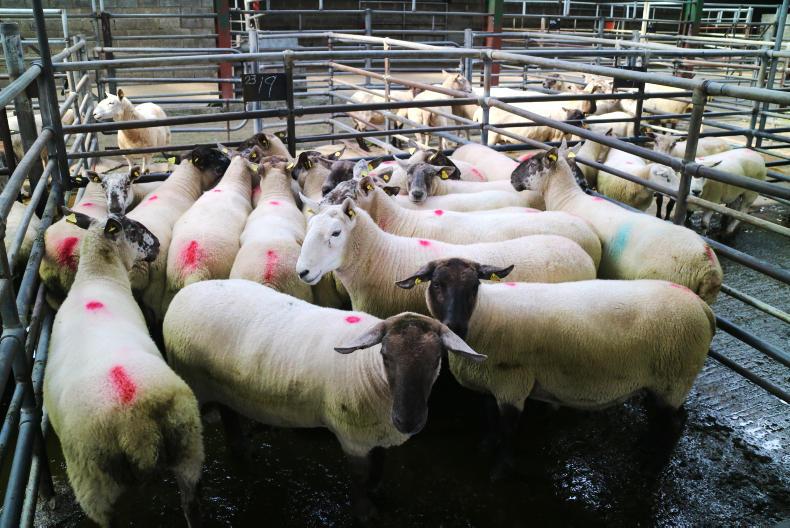A high percentage of mid-season lambing flocks have weaned in recent weeks or are about to do so.
For farmers participating in the Sheep Welfare Scheme (SWS), the decision on when is the best time to sell ewes will be influenced by the number of ewes on hand and the farm’s scheme reference number.
Reference number
The 2019 payment is based on the lesser of a farmer’s SWS reference number or the number of ewes entered on the 2018 sheep census.
This is also the retention number that farmers must abide by for 2019.
The Department advises that there is no issue with farmers deciding to reduce their reference number at any stage of the scheme.
For example, a farmer with a reference number of 250 ewes can decide to reduce numbers to 200 ewes, with this becoming the rate on which payment will be based on for 2019.
The penalty is twice the shortfall number
There is an option of increasing at a later date for subsequent scheme years.
If this is the decision taken, the Department must be notified of the change and this can be completed by sending a note outlining the change in numbers to the Sheep Welfare Scheme Section, DAFM, Government Offices, Old Abbeyleix Road, Portlaoise, Co Laois, or by emailing sheepscheme@agriculture.gov.ie.
Risk
Regarding the potential risk of failing to notify the Department of a reduction in numbers, the Department advises that if an inspection occurs and a shortfall is identified, then a penalty will be applied.
The penalty is twice the shortfall number.
In the example above where ewe numbers have reduced from the reference number of 250 ewes to 200 ewes, the penalty would be payment for 100 ewes (ie 50 ewes x twice the shortfall = 100 ewes).
The number of ewes which payment is based upon for 2020 is the lesser of a farmer’s reference number or the number of ewes (over 12 months of age) entered in the 2019 sheep census.
This is also the minimum retention number farmers must possess for 2020 to receive full payment in the final year of the scheme.
Special dispensation may apply where numbers have been reduced due to certified animal welfare reasons.
Replacement options
Where farmers take the decision to sell ewes, but want to ensure their reference number is maintained, there is only one option of purchasing replacement ewe hoggets or ewes to prevent any shortfall from occurring.
It is important to note that for farmers who retain their own replacements, 2018-born ewe hoggets can be included in the reference number ewe calculation in 2019 irrespective of whether they have been run dry or produced lambs in 2019.
Optimum timing
Leaving aside the SWS, a decision to sell ewes will boil down to the condition of ewes, grass supplies and the farm's cashflow position.
The trade for cull ewes is currently relatively positive.
Fleshed lowland ewes are trading from €85 to €105 for small- to medium-sized lots, with large-framed ewes rising to €110 to €120 and as high as €130 in some mart sales for exceptional lots.
It is worth remembering that many factories are operating an upper payment limit of 40kg carcase weight.
This is something that should be checked in advance of selling if ewes are likely to exceed this weight.
There is also strong demand emerging for feeding ewes, with competition strong for store lambs and some farmers opting to purchase ewes instead.
To maximise this sales avenue, ewes should be grouped in uniform batches for sale.
The best demand will be for ewes with a reasonable mouth and possessing an average cover of flesh.
With regard to retaining ewes for further feeding, this will depend on grass supplies.
There is little merit in retaining heavy fleshed ewes, while, for ewes requiring feeding, it will take in the region of eight to 10 weeks to gain one condition score on good grass.
For ewes in poor body condition, there will be a slower recovery period before ewes start gaining significant condition.






 This is a subscriber-only article
This is a subscriber-only article










SHARING OPTIONS: